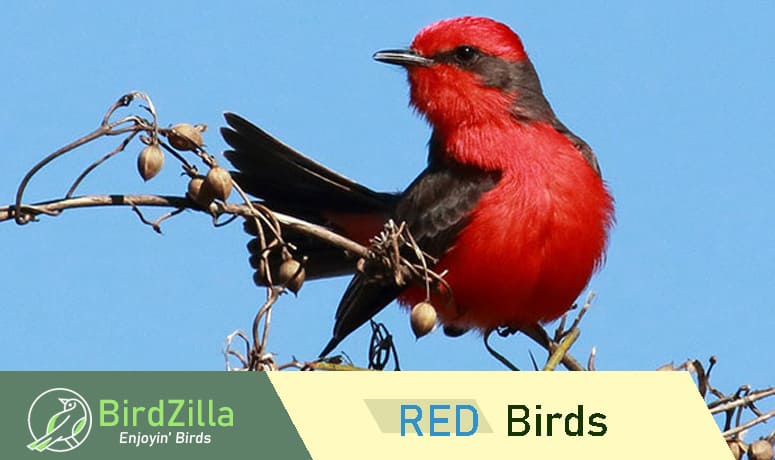
NB! We previously had 10 red birds here, but we added an additional 5. This means you can now see 15 of the most common red birds in North America, in our opinion.
Red birds have captured the imagination of humans for centuries, with their vibrant plumage and striking appearance. Whether seen flitting through the trees or perched atop a feeder, these birds are a common sight in many parts of the world.
The color of a bird’s plumage is critical not only because birders use markings and colors to identify birds but also because birds have incredible color vision, so bright plumage is crucial for mating. More colorful plumage means a bird is in good health and strong.
We’ve compiled a list of the most common red birds, their descriptions, frequently asked questions, and more! Some of these birds may be primarily red, while others may only have sections of red.
On this page
- #15: Scarlet Ibis
- #14: Painted Redstart
- #13: Pine Grosbeak
- #12: Pyrrhuloxia
- #11: House Finch
- #10: Roseate Spoonbill
- #9: Elegant Trogon
- #8: Vermilion Flycatcher
- #7: Summer Tanager
- #6: Hepatic Tanager
- #5: Ringed Kingfisher
- #4: Painted Bunting
- #3: Scarlet Tanager
- #2: Cinnamon Teal
- #1: Northern Cardinal
- Frequently Asked Questions about the Red Birds
#15: Scarlet Ibis
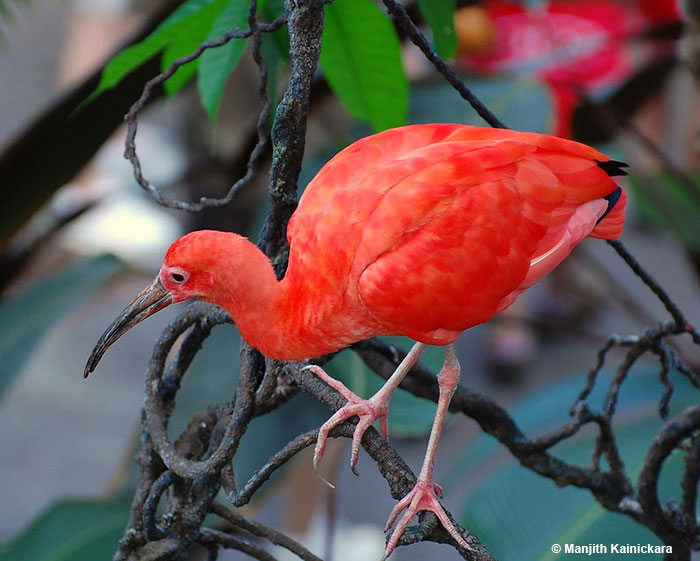
© Manjith Kainickara
The Scarlet Ibis is a medium-sized wading bird with long legs and a curved bill. The male’s bill is usually thicker than the female’s, changing color throughout the year from reddish to black during breeding season.
These birds get their name from their gorgeous scarlet color, which varies in shades and tints throughout their feathers. Scarlet Ibises can be found throughout the Caribbean islands and South America, inhabiting wetlands, mudflats, freshwater lakes, rainforests, and mangroves. The color of their feathers comes from their diet, which primarily consists of crustaceans.
#14: Painted Redstart
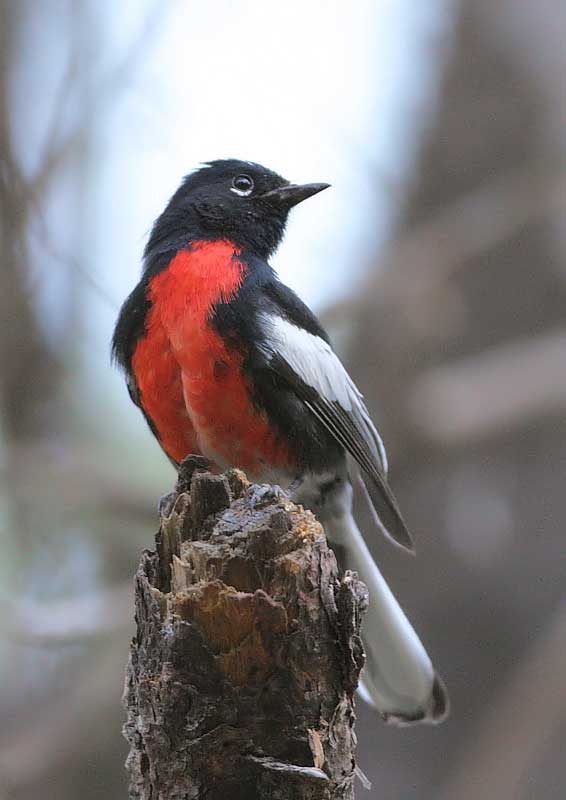
The Painted Redstart is a small songbird with a fine bill, long wings, and long tail. Both males and females have bright scarlet bellies, velvety black feathers, white outer tail feathers, large white wing patches, and white crescents under the eyes. Juveniles are gray instead of scarlet below.
These birds can be found in the mountains of New Mexico and Arizona during the breeding season, preferring shady forests and canyons with a permanent water source. In the winter, most Painted Redstarts migrate south to Central America and Mexico, where they favor similar habitats, nesting in drier woodlands.
#13: Pine Grosbeak
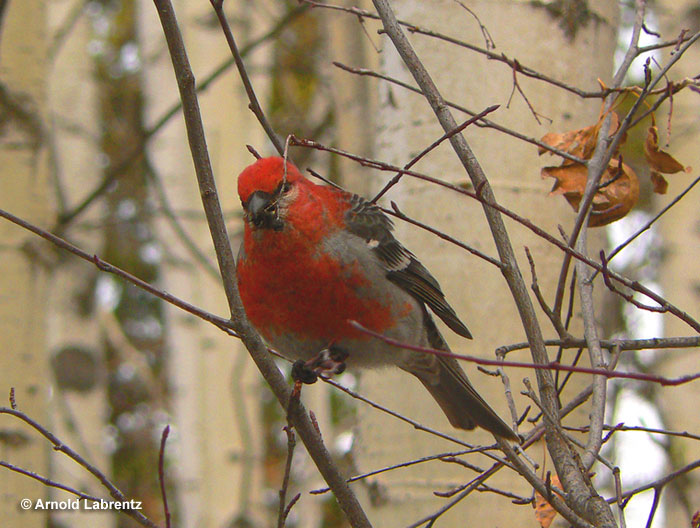
The Pine Grosbeak is a robin-sized finch with a round red head, conical, thick bill, slightly notched, long tail, and heavy chest. Male Pine Grosbeaks are gray and reddish-pink, while females are a duller gray with some yellow or reddish-orange on their heads and rumps.
Both sexes have white wing bars and dark gray wings. These birds can be found in the Northern United States, Canada, Finland, Sweden, Norway, and Russia, inhabiting evergreen forests in Canada, mountainous regions in the West, and subalpine forests in Eurasia.
#12: Pyrrhuloxia
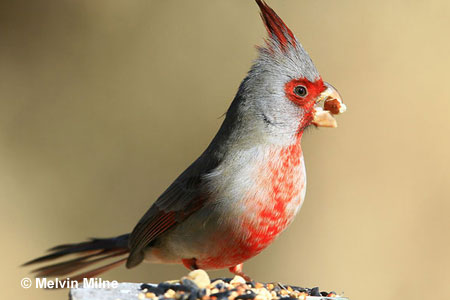
The Pyrrhuloxia, a medium-sized bird with a short bill for cracking seeds, has a long tail and a tall crest.
Resembling female Northern Cardinals in appearance and size, these birds are primarily grayish-brown with prominent flashes of red. Male Pyrrhuloxias have gray plumage, a red face, breast, tail, and a red stripe running down their breast. Female Pyrrhuloxias are duller gray and have less red than males.
These birds are commonly found in Arizona, New Mexico, Texas, and Mexico, inhabiting a variety of habitats, including mesquite savannas, upland deserts, riparian woodlands, and residential areas.
#11: House Finch
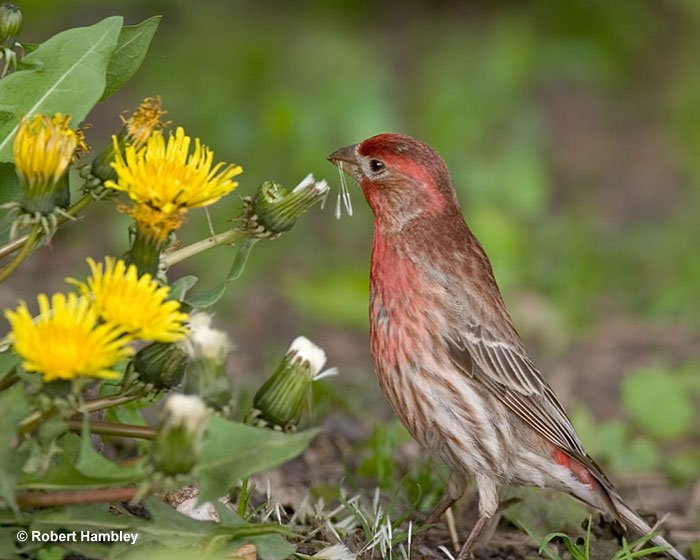
The House Finch is a small finch with a long and flat head and a large beak. Adult male House Finches have rosy red plumage on the upper breast and face, with streaky brown on the belly, tail, and back. You can also see a red rump when these birds are in flight.
Read more: What do red birds symbolize?
Adult female House Finches are grayish-brown with blurry, thick streaks and lack red coloring. These birds are found in most of the United States and Mexico, commonly inhabiting residential backyards, city parks, forest edges, and farms.
They look similar to the Purple Finch and the Cassin’s Finch, but each has small differences.
House Finches are social birds and often move in noisy groups, feeding on the ground, at bird feeders, or high in trees. They are primarily seed-eaters, feeding on a variety of plant materials and sunflower seeds at feeders.
#10: Roseate Spoonbill
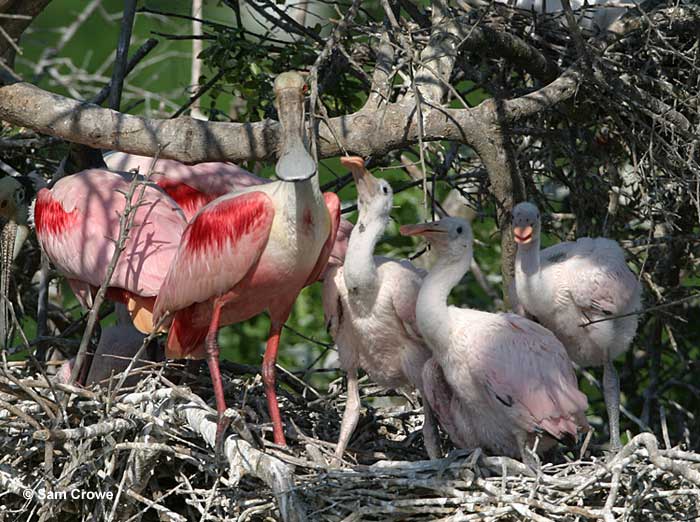
Rosate Spoonbills are medium-sized wading birds. They have small heads and a long bill that flattens into a spoon at the end. They have long necks, long legs, and football-shaped bodies. Roseate Spoonbills are pale pink overall and have brighter pink on their rumps and shoulders. They also have a yellowish-green head, white neck, and red eyes.
These birds forage in shallow marine, brackish, and fresh waters with abundant aquatic invertebrates. These habitats include mangroves, bays, roadside ditches, and forested swamps. These spoonbills roost and nest in shrubs and trees along the edge of the water.
Like the Scarlet Ibis, Roseate Spoonbills get their coloration from their diet. Aquatic vertebrates, like crustaceans, contain pigments called carotenoids that turn their feathers pink.
#9: Elegant Trogon
The Elegant Trogon is a medium-sized bird that is pot-bellied and stocky. These birds with red are larger than robins, have round, large heads, thick necks, large eyes, and stout, short bills.
Male Elegant Trogons have rose-red underparts and copper-green upper parts. They have a white band across the breast, a black-and-white barred underside, and black faces and throats. Female Elegant Trogons have a similar pattern to males, but instead of rose-red underparts and copper-green upperparts, they have grayish-brown upperparts and a white splotch around the eye.
Elegant Trogons can be found in Arizona, Mexico, and Central America. Throughout its range, these birds live in the widest variety of habitats of any trogon. In Arizona, they like to inhabit forested mountain canyons. However, they can also be found in juniper habitats and where Douglas-fir, mesquite, and cottonwood-oak cover is limited.
Elegant Trogons are located in Arizona mountain ranges: the Santa Ritas, the Atascosas, the Chiricahuas, and the Huachuchas.
#8: Vermilion Flycatcher
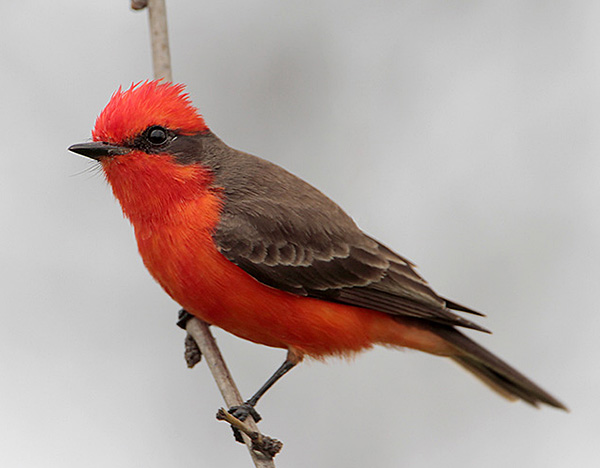
The Vermilion Flycatcher is a small but stocky flycatcher. They have flat heads, a straight, broad bill and with a slim tail.
Adult male Vermilion Flycatchers have bright red plumage on their head, breast, and belly. They have dark brown on thie back, wings, tail, and a mask through the eyes. Female Vermilion Flycatchers are grayish-brown, have pinkish-red on their underparts, and have muted streaks on the breast. Both males and females have black bills.
These flycatchers can be found in the Southern United States and in Mexico. They prefer to inhabit open countries like dry scrublands, deserts, farmlands, canyon mouths, and parks.
Vermilion Flycatchers depend on streams within the scrub ecosystem; these areas usually have bottomland trees like willow, cottonwood, mesquite, and sycamore.
A fun fact about these birds is that when males are courting females, they’ll bring gifts. The most common gift is an insect, and they’re usually flashy, like a butterfly.
#7: Summer Tanager
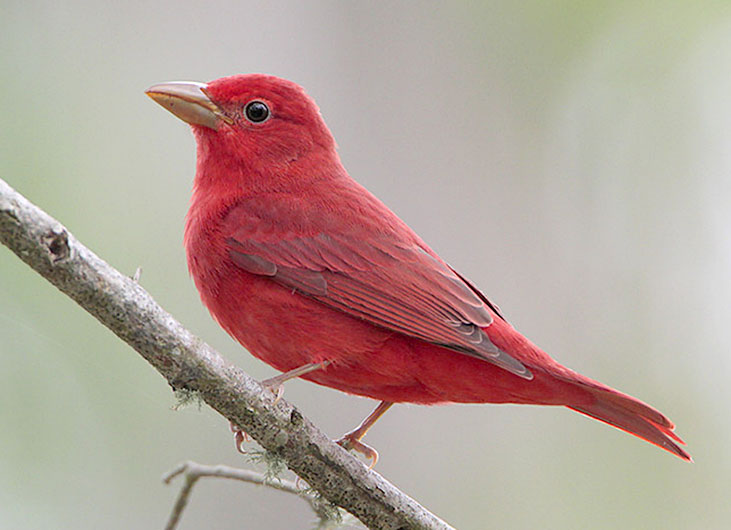
Summer Tanagers are medium-sized songbirds with red feathers. They have large heads, chunky bodies, and large heads. They also have thick, large bills and red body. Male Summer Tanagers are completely bright red. Female Summer Tanagers are bright greenish-yellow. They’re yellower on their underparts and heads and slightly greener on the wings and back. Both have pale bills.
The Summer Tanager can be found in the southern portions of the United States, Mexico, Cuba, the Bahamas, Central America, and South America.
Summer Tanagers breed on the edges of open forests in the mid-Atlantic and southern United States. In the southwest, Summer Tanagers breed in low-elevation areas with cottonwood and willow trees. During their migration, these tanagers stop in similar habitats to those in their breeding range. However, they also inhabit beach ridges and gardens.
They spend their winters in open habitats of Mexico, Central America, and South America.
#6: Hepatic Tanager
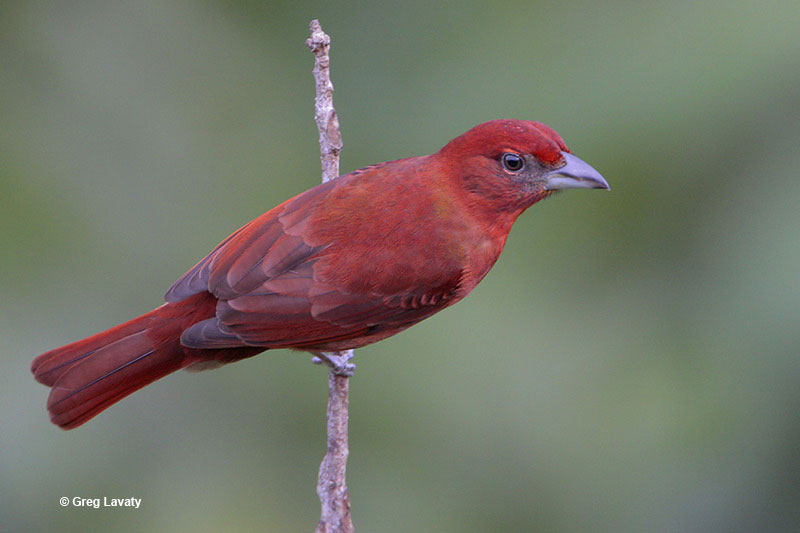
The Hepatic Tanager is a medium-sized songbird with with all-around red. They have heavy, short bills, long wings, long tails, and strong feet and legs. Male Hepatic Tanagers have gray ear patches, reddish underparts, and red-grayish upper parts. Female Hepatic Tanagers have dusky ear patches, yellowish underparts, and olive-yellow upper parts. Both males and females have dark legs and bills.
Hepatic Tanagers can be found in parts of California, Arizona, New Mexico, Texas, Mexico, Central America, and South America. In the United States, these tanagers breed in open woodlands. The optimal forest environment involves a partially open canopy and open understory. Pinyon pine, ponderosa pine, white fir, and Jeffrey pine are key tree species in the Hepatic Tanagers range. This is because they build their nests in these trees.
During migration, these birds use similar habitats with pine and pine-oak trees; however, they’ll also take advantage of deciduous habitats along rivers. In desert environments, migratory birds often appear in habitats that are rich in vegetation. Most of the U.S. breeding population winters in Mexico.
#5: Ringed Kingfisher
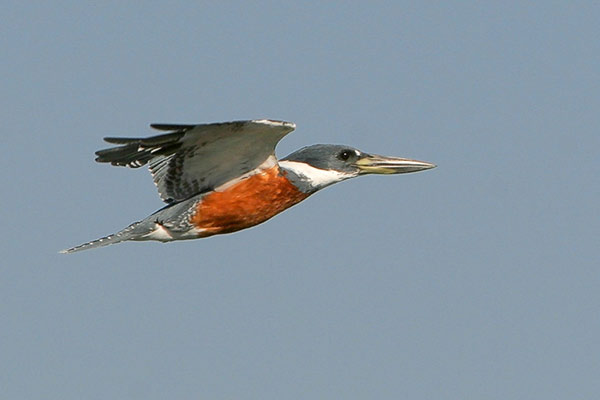
The Ringed Kingfisher is a large, heavy-bodied kingfisher. They have daggerlike, thick bills, long tails, long wings, short legs, and shaggy crests.
Male Ringed Kingfishers have slaty blue upperparts, rich chestnut underparts, a white collar, white splotches on the wings and tail, and white under tail coverts. Female Ringed Kingfishers look similar but have a wide bluish band across the chest and a thin white crescent above the reddish-brown belly.
The Ringed Kingfisher can be found in parts of Texas, Mexico, Central America, and South America. They frequent freshwater habitats that have clear enough where they can spot prey from above.
They’ll use any perch, both handmade and natural. They really like to use utility wires and bare branches on tall trees. Ringed Kingfishers hunt in lakes, ponds, rivers, and sometimes brackish and saltwater habitats.
After the breeding season, Ringed Kingfishers broaden their range and will even hunt in ditches and canals if perches are present. In Central and South America, these kingfishers inhabit offshore reefs, mangrove forests, and fish farms.
#4: Painted Bunting
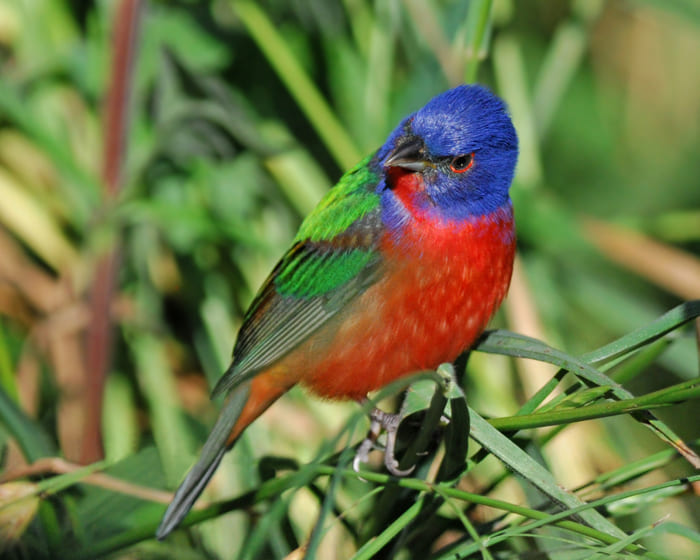
The Painted Bunting is a medium-sized finch-like bird with a thick, stubby bill made for eating seeds.
Male Painted Buntings are stunning, with various colors that can be found on their plumage. They have green backs, a blue head, and red underparts. Female and immature Painted Buntings are entirely a bright yellow-green. They don’t really have a pattern, and their color is more radiant and greener than other birds.
The southern central U.S. breeding population can be found in woodlands, brushy roadsides, abandoned farms, sections of grasses, wildflowers, and weeds.
Painted Buntings that are a part of the Southeast coastal population can be found in scrub communities, wooded back dunes, maritime hammocks, palmetto thickets, hedges, fallow fields, citrus groves, and yards. The two breeding populations we talked about previously also have different wintering grounds. However, they both gravitate toward tickets, shrubby overgrown pasture, and high grass.
#3: Scarlet Tanager
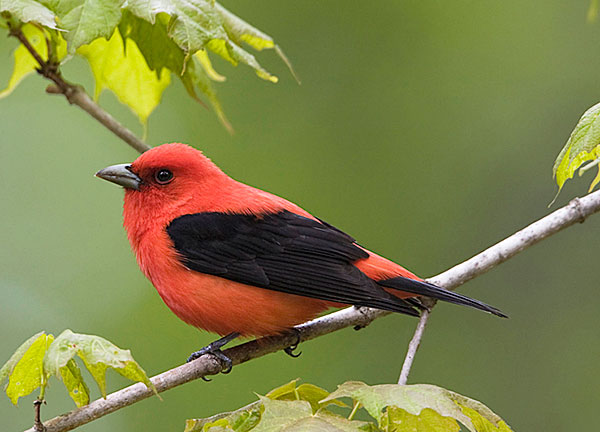
The Scarlet Tanager is a medium-sized songbird with a rounded, thick bill, large head, and wide, short tail. In the spring and summer, adult male Scarlet Tanagers are bright red birds and have black wings and tails. Female Scarlet Tanagers are greenish-yellow and have a darker greenish-yellow color on their tails and wings.
When the breeding season ends, the adult males molt and look like the females. However, they have black instead of the darker greenish-yellow color on the tails and wings.
Scarlet Tanagers are commonly found in eastern North America, Cuba, the Bahamas, Central America, and South America. They prefer larger forests with large trees, so they like to nest in oak, oak-hickory, pine-oak, hemlock-hardwood, and beech forests. However, they can sometimes be seen in the eastern hemlock forests.
When they migrate to the southern United States in the early spring, they feed in grassy fields, on the ground, and in shrubby vegetation. Scarlet Tanagers use similar habitats to the ones listed above in the fall and spring, as well as gardens and parks. In the winter, they go for mature forest edges and forests in western and northern South America.
#2: Cinnamon Teal
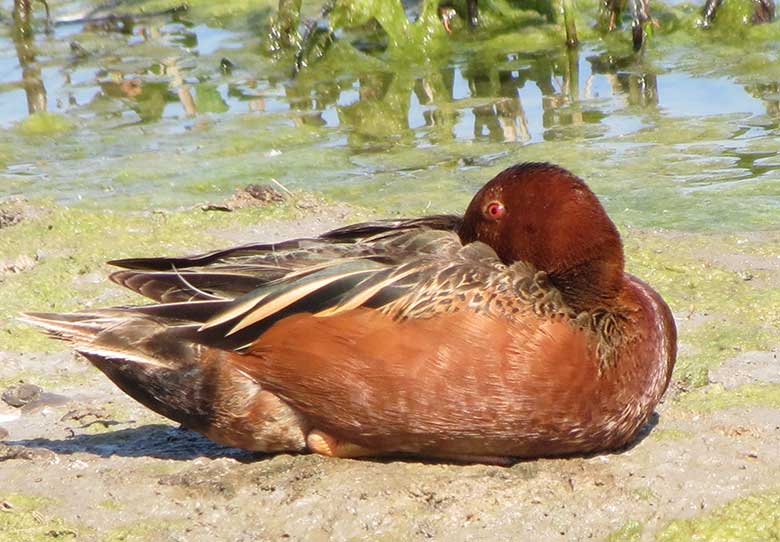
The Cinnamon Teal is a smaller-sized duck. They have larger heads and a relatively long bill. To put this into perspective, their bills are shorter than a northern shovelers bill but larger than a blue-winged teals bill.
Breeding male Cinnamon Teals have red eyes, vivid rusty red wash plumage, a brownish back, white underwing, and long dark bills. Nonbreeding males and females are mostly brown overall. Both males and females have light blue patches on their wings. However, these light blue patches can only be seen when their wings are open.
Cinnamon Teals can be found in Canada, the Western United States, Mexico, and South America.
In North America, these birds nest in freshwater wetlands, and their preferred habitats have emerging vegetation. However, these birds can also be seen in streams, ditches, stock ponds, and reservoirs.
Various marsh plants are used for nesting, like baltic rush, spikerush, saltgrass, tufted hairgrass, foxtail barley, and western wheatgrass. Some of these plants provide both food and cover for these birds.
Cinnamon Teals migrate south of the United States in the winter. They’ll use wet agricultural fields and reservoirs.
#1: Northern Cardinal
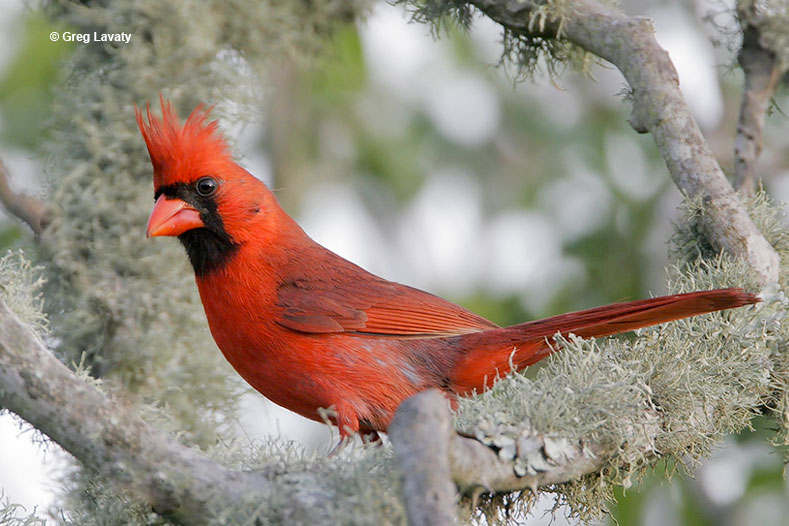
The Northern Cardinal is a large bird with a long tail, noticeable crest, and thick, short bill.
Male Northern Cardinals have striking red plumage all over their bodies, their feathers right around their bills are black, and the bill is also reddish. Female Northern Cardinals have mostly light brown plumage, but they have a little bit of red on the crest, tail, and wings. However, they have the same reddish bill and black face as the males.
Northern Cardinals can be found in most of the United States and Mexico. They inhabit areas like parks, backyards, forest edges, and woodlots. Northern Cardinals are commonly seen at bird feeders, so most think they eat seeds. They love black oil sunflower seeds, peanuts, safflower seeds, striped sunflower seeds, etc. However, Northern Cardinals also eat fruit and insects.
Common fruits that Northern Cardinals will eat are wild grape, hackberry, mulberry, and blackberry. Common insects they’ll eat are crickets, beetles, leafhoppers, flies, cicadas, centipedes, butterflies, and spiders.
Frequently Asked Questions about the Red Birds
What does it mean when you see a red bird?
Seeing a red bird often represents a good omen. This is because of the symbolic meanings associated with this color. Seeing a red bird could mean that a situation has changed for the better or that there is still hope. Other meanings are change is coming, good luck, and prosperity.
What kind of red birds are there besides cardinals?
There are many red birds out there as you just saw. Other kinds of red birds are Scarlet Tanagers, Hepatic Tanagers, Summer Tanagers, Pine Grosbeak, and the Vermilion Flycatcher.
That’s it! We’ve talked about different types of birds found in North America. Let us know in the comments which bird you haven’t seen yet?


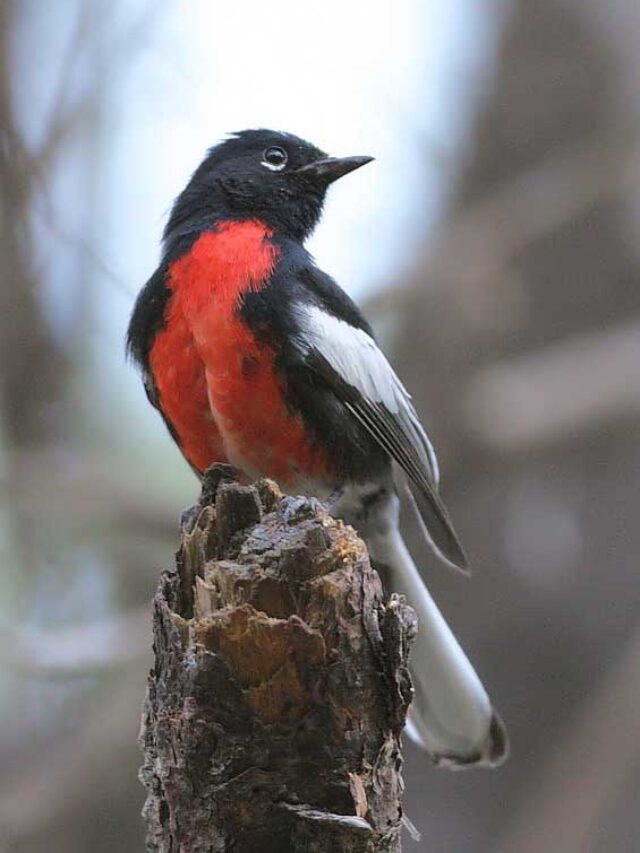
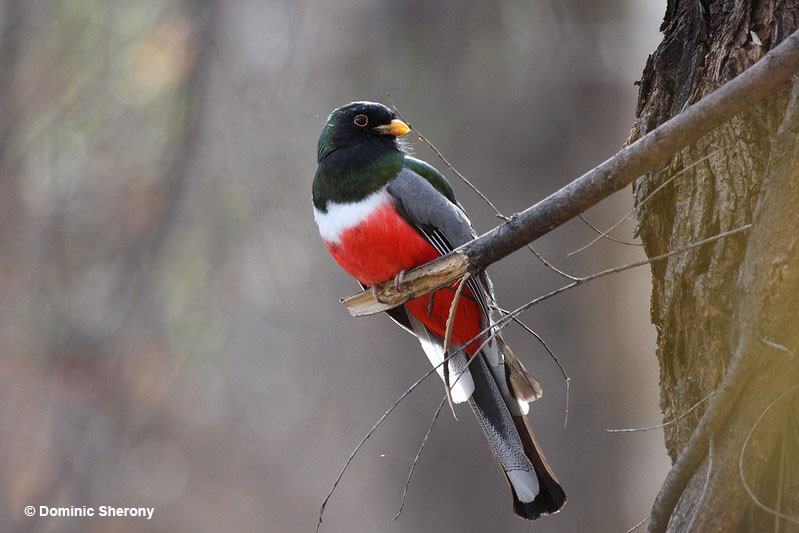
Debbie Thies
Sunday 3rd of September 2023
I live 60 miles east of Dallas. I have a couple of the Painted Buntings that come back ever year but you don't list them in Texas.I also have lots of red Cardinals. The bird I was looking for and cannot find was as big if not a little bigger than a Cardinal. It was bright red with black mixed in running along the head and the wings. If you what bird this please let me know.
Patrick O'Donnell
Monday 4th of September 2023
@Debbie- How nice to have Painted Buntings! We may have left that one off the list because other birds are more common, or have more red in their plumage. However, you are right, with its red coloration, Painted Bunting could easily be added to that list.
It's hard to say what that other bird might be. Hopefully, it will pay another visit and you can get a picture of it.
Angela Gilbert
Thursday 27th of April 2023
Today a red bird with a black head was perched on one of my trees. I've never seen this species before in my area. I can't seem to find any pictures of it among the other red bird photos. Can you tell me what it is?
Sam Crowe
Wednesday 3rd of May 2023
Hi Angela, Might it be Eurasian Bullfinch?